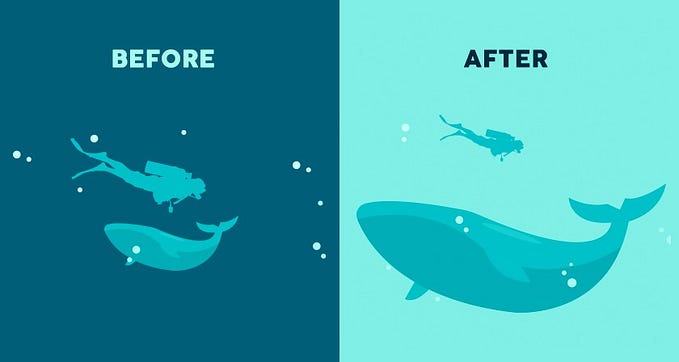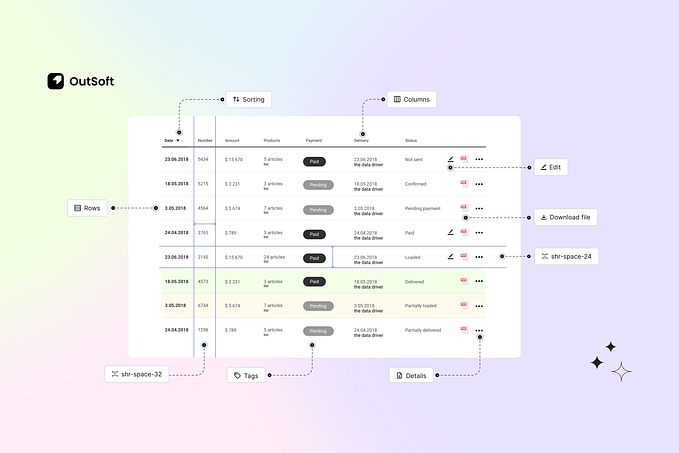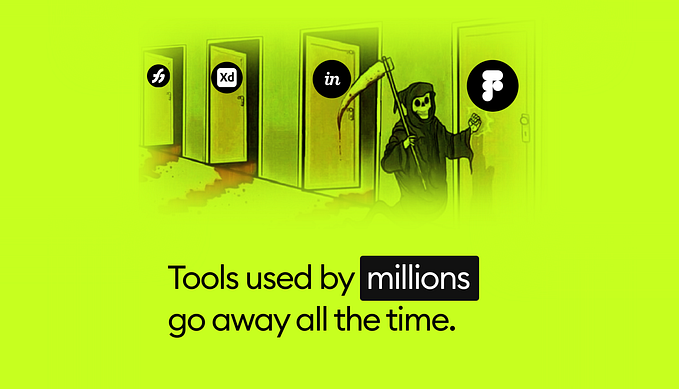The Legendary Circuit de Spa-Francorchamps: Belgium’s F1 Gem

Nestled in the heart of the Ardennes forest, the Circuit de Spa-Francorchamps is a hallowed ground in the world of Formula 1.
The high-speed circuit, known for its breathtaking layout, and rich history holds a prestigious place in motorsport history, having been a fixture on the racing calendar since the early 20th century.
What makes this circuit a marvel is not only its layout, but also the Ardennes microclimate which often leads to unpredictable and sudden weather changes. This leads to different parts of the track experiencing varying conditions, where drivers are confronted with one part of the course being clear and bright while another stretch is rainy and slippery.
This unpredictability adds an extra layer of strategy and excitement, often leading to dramatic and unexpected race outcomes.
Ever since I started watching Formula 1 in 1998, a few circuits have always ranked higher in my books and been close to my heart — Silverstone (Great Britain), Nurburgring (Germany), Imola (Italy), Spa Francorchamps (Belgium), Monza (Italy), Suzuka (Japan), Interlagos (Brazil)
Over the years, many race tracks have been added as the sport evolves and reaches out to new markets and audiences around the world. Some of the earlier race tracks are slowly fading away in the background as “new money” enters the sport.
Sure some new race tracks are bigger, better, and provide a lot more fan engagement, but they are also largely quite boring. (no, I don’t go to race tracks to eat popcorn, or watch a Taylor Swift concert — nothing against her). In fact, if my teenage daughter reads this, she will disown me.
I remember visiting the Abu Dhabi GP in 2010. Apart from the large racing complex, the glitz, and the glamour, there was nothing more “in” the track (sure, it has offered some close finishes with the tag of “end of the season” races where the tables have turned in championship order and it makes it exciting for the fans and create a social media storm).
The Abu Dhabi track does not emote any history, you couldn’t feel the motorsport culture when walking through the crowd, you could not sense the passion amongst most of the crowd.
It was as if walking through a zombie zone where most people (not all) wanted to experience something “new and exciting” that was taking place in the desert country.
You could sense that most of the people had come to watch the race only for its entertainment value — wine and dining were high on the agenda. And yes, business networking.
But I digress.
Let me get back to Circuit de Spa Francorchamps, a track that has so much adventure and history in it — one could write a whole book on it. (am not sure if one could write a book about the Abu Dhabi race track in the same way). And that’s where lies the fundamental difference.
In the recent past, I have written about a couple of the legendary tracks — Nurburgring, Silverstone.
Spa Francorchamps was in the queue, so here it comes now
The Origins: A Historic Beginning
The origins of Spa-Francorchamps date back to 1920 when the track was designed by Jules de Thier and Henri Langlois Van Ophem.
After World War 1, Jules — director of the newspaper “La Meuse” wanted to relaunch “The Meuse Cup”. During a meeting with Baron Joseph at Francorchamps de Crawhez and the racing driver Henri Langlois Van Ophem, it was decided that the road “triangle” linking Spa Francorchamps to Malmedy and Stavelot would be an ideal circuit.




The intention was to create a circuit that leveraged the natural terrain of the region, providing a challenging and exhilarating experience for drivers. The original layout was a daunting 14.9 kilometers, utilizing public roads between the towns of Francorchamps, Malmedy, and Stavelot.
Construction began in 1920 and in 1921 was ready for racing. The first race was supposed to be a car race. Unfortunately, only 1 driver signed up. The event was therefore converted to a race involving 23 motorbikes won by Hassal’s Norton 500cc at an average speed of 90 kph.


One year later in 1922, The Royal Automobile Club of Belgium organized is “Belgium GP”, an endurance race for sports cars won by Tornaco Abadal at an average speed of 88.9 kph.
Then in 1924 (one year after the first 24 Hours Le Mans), the inaugural 24 Hours of Spa-Francorchamps took place.
The first Grand Prix (non-championship race) was held in 1925 (called the European Grand Prix) and won by Antonio Ascari. Until then the track was a dirt road and was finally tarmacked in 1929 to prevent stones being thrown up. In 1939 when the Raidillon corner was added, it made the circuit one of the fastest in Europe.
But, during World War 2 racing was halted, as the circuit was in the middle of the Ardennes Offensive.
However, after a 7-year break, racing resumed with some modifications to the track. In 1947, it got to host the European Formula International GP which was won by Jean-Pierre Wimille’s Alfa Romeo.
When the Formula 1 regulations were put into place, the circuit was one of just seven to be part of Formula 1’s maiden championship in 1950. That race was won by the legendary Juan Manuel Fangio, who led home an Alfa Romeo one-two ahead of teammate Nino Farina.
Before 1970, there were no safety modifications of any kind done to the circuit and the conditions of the circuit were, aside from a few straw bales, virtually identical to everyday civilian use.
The old circuit was (and still is) used as an everyday public road, and there were houses, trees, electric poles, barnyards, fields and other obstacles located right next to the track.

The combination of fast straights, sharp corners, and elevation changes quickly earned Spa a reputation as one of the most challenging circuits in Europe.
This configuration epitomized the raw and dangerous spirit of early Grand Prix racing, where drivers raced without the sophisticated safety measures seen today.
Eau Rouge (having a gradient of 17%), in particular, is a corner that separates the good from the great. The steep uphill climb combined with the high-speed entry requires drivers to commit fully, often taking the corner flat out.


Eau Rouge has a very interesting history, which is not known to many
Eau Rouge (“red water” in french), la Source, Pouhon — are references to “water” on the track at the Circuit de Spa-Francorchamps, and not by coincidence.
L’Eau Rouge is a 15 km long stream that runs through the region and under the track (you can see it in the above map of the circuit) at the foot of the Raidillon (“steep path” in French) and then meanders through the site, between the paddocks and the entrance to Blanchimont.
English speakers refer to Eau Rouge with inference to the Raidillon without always saying it. This stream is a tributary of the Amblève, which served as a border between the Roman and German empires, and later between Belgium and Germany.

The river owes its name to the rusty colour of the many ferruginous carbogas seeps (these are areas where hydrocarbons like methane and hydrogen sulfide seep out of the seabed into the ocean), or pouhons (“pouhon” is a term used in Belgium to describe a natural spring that produces carbonated and ferruginous (iron-rich) water.
This river also has numerous tributaries, one of which is the Rohon. It enters the Circuit de Spa-Francorchamps site at the La Source corner, then disappears under the track to cross the paddock underground and flows into the Eau Rouge.


Over the decades as motorsport evolved, so too did Spa-Francorchamps. The track has undergone numerous changes to enhance safety while preserving its essence. The way Eau Rouge has evolved itself is breathtaking
The most significant alteration came in 1979, when the track was shortened to its current 7-kilometer layout, reducing the reliance on public roads and incorporating modern safety standards.

Despite these changes, iconic sections like Eau Rouge and Raidillon have remained intact, continuing to challenge and thrill drivers and fans alike.
Having negotiated the La Source hairpin, drivers race down a straight to the point where the track crosses the Eau Rouge stream for the first time, before being launched steeply uphill into a sweeping left-right-left series of corners with a blind summit.
The Raidillon was introduced in 1939 to make the circuit faster by cutting off the old l’Ancienne Douane hairpin. This change has made it one of the most beloved and feared corners in the world.
Double F1 World Champion Fernando Alonso expresses it perfectly:
…You come into the corner downhill, have a sudden change [of direction] at the bottom and then go very steep uphill. From the cockpit, you cannot see the exit and as you come over the crest, you don’t know where you will land. It is a crucial corner for the timed lap, and also in the race, because you have a long uphill straight afterwards where you can lose a lot of time if you make a mistake. But it is also an important corner for the driver’s feeling. It makes a special impression every lap, because you also have a compression in your body as you go through the bottom of the corner. It is very strange — but good fun as well.
The combination of these famous corners with the circuit’s natural undulations and unpredictable weather makes Spa one of the best F1 tracks that drivers love to drive on.



In 1939, the road turned left at Eau Rouge and went up to the old Customs House, a distance of about 150 yards, then turned sharp right and rejoined the circuit at Raidillon.
Incidentally, the Customs House marked the border with the old Prussian Empire. Before the First World War, the Belgian-German border used to be here. This was a corner of the track until 1939 and was replaced by Eau Rouge and Raidillon after the Second World War.
If you want to deep dive into all the Corners, Chicanes, and the Long Straights of Spa-Francorchamps, I have created a separate article for that, so as to not make this a very lengthy one.

Nasty Reputation of Spa Francorchamps
Spa was the fastest road circuit in Europe at the time, and it had a nasty reputation for being dangerous and very fast- it was a circuit known to be one for the brave, and most drivers were frightened of it.
The old Spa circuit was unique in that speeds were consistently high with hardly any let-up at all. This made it an extraordinarily difficult mental challenge, because most of the corners were taken at 180+ mph and were not quite flat- every corner was as important as the one before it.
If a driver lifted just that little bit more, then whole seconds, not tenths- would be lost. Even the slightest error of any kind was punished very harshly in more ways than one. But this reality also worked inversely- huge advantages could be gained if a driver came out of a corner slightly faster.
Like the Nurburgring and Le Mans circuits, Spa became notorious for fatal accidents, as there were many deaths each year at the ultra-fast track, especially at the 1960 Belgian Grand Prix where 2 drivers, Chris Bristow and Alan Stacey were both killed within 15 minutes (although Stacey’s accident was caused by a bird hitting him in the face).
Stirling Moss had crashed at Burnenville stretch (just before Malmedy on the map) during practice and was severely injured. When Armco crash barriers were added to the track in 1970, deaths became less frequent there but the track was still notorious for other factors.
The Ardennes Forest has very unpredictable weather and there were parts where it was raining and the track was wet, and other parts where the sun was shining and the track was completely dry (this continues to happen even today)
This factor was a commonality on long circuits, but the weather at Spa was always more unpredictable than other long circuits, combined with the fact that it was an ultra-high speed track with all but 1 corner (La Source) being extremely high speed made it one of, if not the most dangerous race track in the world (next to the old and extremely dangerous Nurburgring)
There was one particular section called the Masta Kink (look it up on the map), which was one of the most fearsome sections on any race track in the world, requiring skill and bravery in equal measure to get it right.
After a long run from Malmedy, the cars would reach top speed before having to negotiate Masta, a high-speed left-right chicane, and a good exit speed was vital as it was followed by another long straight run to Stavelot.
This was a very fast and very dangerous corner because it was situated right in the middle of two very long unbroken straights both about 2.4km long. The speed in this sector could reach 190 mph.
Multiple fatalities during the 1973 and 1975 24 Hours of Spa touring car races more or less sealed the old circuit’s fate, and by 1978, the last year Spa was in its original form, the only major races held there were the Belgian motorcycle Grand Prix and the Spa 24 Hours touring car race.

The 1000 km World Sportscar Championship race no longer took place after 1975 and did not come back until 1982.
In 1969, the Belgian Grand Prix was boycotted by F1 because of the extreme danger of Spa. There had been 10 racing fatalities in total at the track in the 1960s, including 5 in the 2 years previous. The drivers demanded changes made to Spa which were not possible on short notice, so the Belgian Grand Prix was dropped that year.
Armco was added to the track and sections of it were improved (especially the Stavelot and Holowell sections), just like Armco had been added for the 1969 Le Mans race.
One last race there the following year on the improved track was still not satisfactory enough (even after a temporary chicane was added at Malmedy just for that race) for the drivers in terms of safety, and even with the chicane, the drivers averaged 150+ mph (240 km/h) during the race.
For the 1971 race, the track owners and authorities had not brought the track up to date with mandatory safety measures, and the race was canceled.
Formula One would not return to Spa until 1983 on the modern track.






Legendary F1 Drivers at Spa-Francorchamps: Masters of the Ardennes
The track has been witness to numerous legendary battles and historic moments in Formula 1. The circuit’s unpredictable weather, combined with its challenging layout, has produced some of the most dramatic races in the sport’s history.
The 1966 Belgian Grand Prix, held in torrential rain, saw only six of the 16 starters finish the race, highlighting the track’s brutal nature.
In 1998, Spa was the scene of one of the most chaotic starts in F1 history, with a massive first-lap crash involving 13 cars in wet conditions. The race was eventually won by Damon Hill, giving the Jordan team its first-ever victory.
Apart from some of the chaotic starts to the races, here are a few truly memorable races that stand out due to the sheer grit and mastery of the F1 drivers

Ayrton Senna: The Rain Master
Ayrton Senna’s mastery of Spa-Francorchamps is the stuff of legend. He won 5 times at this circuit. The Brazilian driver, renowned for his extraordinary talent in wet conditions, delivered some of his most memorable performances on this iconic track.
Senna’s win in the 1985 Belgian Grand Prix is particularly noteworthy. Driving for Lotus, Senna showcased his sublime car control and fearless driving style, navigating the treacherous wet conditions to secure victory.
His ability to find grip where others struggled made him a standout performer at Spa, earning him the moniker “The Rain Master.”


Michael Schumacher: The King of Spa
Michael Schumacher’s association with Spa-Francorchamps is also profound. It was here, in 1991, that a young Schumacher made his Formula 1 debut with Jordan.
Although his first race ended prematurely with a clutch failure, it marked the beginning of a legendary career. A year later, Schumacher returned to Spa with Benetton and secured his first-ever Grand Prix victory. This triumph in 1992 was the foundation of a remarkable relationship with the circuit.
This was the circuit where Mika Hakkinen in his McLaren Mercedes pulled off one of the most epic moves in Formula 1 on Michael Schumacher.
This move has been considered one of the most stunning overtakes of the 21st Century in 2000, when he passed Michael Schumacher’s Ferrari for the lead of the Belgian Grand Prix on the run up to Les Combes.
Hakkinen used Ricardo Zonta’s BAR — which the pair were coming up to lap — to full effect and passed both backmarker and Schumacher in one move.
Words will not do justice if I sit down to describe that move. You have to watch it to see the brilliance of Mika
Schumacher’s total of six wins at Spa is a record, demonstrating his exceptional skill and affinity with the track. His 1995 victory, where he started from 16th on the grid in wet conditions and battled through the field to win, remains one of the greatest drives in Formula 1 history.

Kimi Räikkönen: The Iceman Conquers Spa
Kimi Räikkönen, known as “The Iceman,” has a special place in Spa-Francorchamps lore. The Finnish driver has secured four wins at Spa, a feat that highlights his prowess on this challenging circuit.
Räikkönen’s first victory came in 2004 with McLaren, where his calm and composed driving style shone through in difficult conditions.
Räikkönen’s 2007 and 2009 victories with Ferrari further cemented his status as a Spa specialist. His ability to maintain incredible speed through Eau Rouge and Raidillon, coupled with his strategic racecraft, made him a formidable competitor at Spa.
One specific incident stands out
During the 2002 race, there was a huge plume of smoke at Eau Rouge and possibly the yellow flag was not out yet. Kimi was on a charge approaching the corner, and he didn’t know whether it was a crash or just some smoke from a retiring car
Kimi, being Kimi rather than slowing down or taking his foot off the gas pedal, actually seems to have throttled up to blast through Eau Rouge.
The Iceman’s affinity with the track is evident in his daring, consistent performances, often making him a favorite in the Ardennes.


Lewis Hamilton: The Modern Maestro
Lewis Hamilton, one of the most successful drivers in Formula 1 history, has also left an indelible mark on Spa-Francorchamps. Hamilton’s debut victory at Spa came in 2010 with McLaren, where he demonstrated his ability to adapt to the track’s challenging conditions.
His exceptional skill in wet and mixed conditions, combined with his strategic acumen, has seen him secure multiple wins at Spa.
Hamilton’s 2017 victory with Mercedes is particularly memorable. Starting from pole, he faced intense pressure from Ferrari’s Sebastian Vettel throughout the race. Hamilton’s flawless drive, managing tire wear and defending against Vettel’s advances, showcased his remarkable composure and skill.


Jim Clark: The Spa Specialist
Jim Clark, the legendary Scottish driver, was a dominant force at Spa-Francorchamps during the 1960s. Clark secured four consecutive wins at Spa from 1962 to 1965 with Lotus. His natural talent and smooth driving style were perfectly suited to the fast and flowing nature of the old Spa circuit.
Clark’s mastery of the track was evident in his ability to navigate the challenging conditions with ease. His 1963 victory, where he lapped the entire field except for Bruce McLaren in second place, remains one of the most dominant performances in Formula 1 history.

Formula 1 Driver Quotes About The Track
“Eau Rouge is a man’s corner.” — Ayrton Senna
“Spa is like home to me.” — Michael Schumacher
“Spa is one of the most beautiful tracks in the world. I love racing here.” — Lewis Hamilton
“Spa is one of those fabled corners that drivers and fans always talk about — but it really is that special. — Jenson Button
“Spa is the best circuit in the world. It’s a great place to drive, and if you could race there every week, it would be fantastic.” — Kimi Räikkönen
“Spa is the best circuit in the world. I think it’s the favorite track for most of the drivers. You never get tired of driving here.” — Fernando Alonso
“Spa is the track I enjoy the most. It’s an incredible place with a lot of history and a lot of great memories.” — Sebastian Vettel
“Spa is the most exciting circuit we go to. The undulation, the way the circuit flows, the way you can attack the corners — it’s a great challenge for both car and driver.” — Jenson Button
“The speed through Eau Rouge is just amazing, and it’s an incredible feeling when you get it just right.” — Nico Rosberg
“Spa is the best track in the world. It’s the one place that still feels like a proper racing circuit.” — Mark Webber
Spa Francorchamps Falls Into Trouble in 1999
In 1999, due to the introduction of a new legislative order in Europe, tobacco advertising bans were imposed on Formula One
Due to these political and legislative circumstances, the race on this circuit was left out of the 2003 calendar as a response to the internal tobacco legislation in Belgium. They were able to get the 2004 race going, as the event was tagged as a World Class event within the national senate.
More troubles surfaced in 2005, when the organiser/promoter of the track went bankrupt, and therefore the planned improvements to the race track and paddock didn’t get completed. Spa was dropped from the Formula One calendar in 2006.
The local government stepped in and provided the necessary funds, but it was too late for the 2006 race to take place.
Finally, with a new financial backer, the renovation started in November 2006 and finished in May 2007 at a cost of around Euros 19 million.
Formula 1 returned to Spa for 2007, with a modified track layout. The Bus Stop chicane was moved back towards Blanchimont and the La Source hairpin moved forward. This allowed more space for the new pit lane. The modifications also gave a longer start/finish straight.
Spa In Trouble Again in 2024
Spa-Francorchamps is not just a race track; it is a living museum of motorsport history. The circuit has retained much of its original charm and character, offering a glimpse into the past while continuing to host cutting-edge racing.
Unfortunately, all good things have to come to an end. And so might be the case of this marvelous and legendary track.
Over the years, hosting fees for the Belgian Grand Prix have significantly increased, reaching €23.5 million in 2023 and projected to rise to €28 million by 2025. And despite high ticket prices, the circuit has faced financial losses over the past few events.
To add to the agony, there is reluctance from the local government to increase funding to cover these rising costs.

Speculation about Spa’s removal from the calendar has arisen before, but one-year agreements have kept it in place. However, reaching an agreement seems challenging now as Formula 1 demands higher fees, and Liberty Media has notified organizers of further fee increases starting in 2026.
As of this year, Formula 1 has announced that the Belgian GP at Spa-Francorchamps will remain on the calendar until 2025 (following the signing of a one-year extension with the promoters)
As Formula 1 continues to evolve, Spa remains a constant, reminding us of the raw, unfiltered essence of racing.
Whether it’s the roar of engines through Eau Rouge or the unpredictable twists of fate dictated by the Ardennes weather, Spa-Francorchamps will always hold a special place in the heart of motorsport.
It would be a real heartbreak if Spa Francorchamps is taken off the F1 calendar.
If you are an absolute history buff and are smitten with the early era of motorsports and Formula 1, then watch this below video for full coverage of this beautiful and dangerous race track.
Be the first one to receive exclusive and fascinating Formula 1 stories as soon as those are published
If you liked reading this story, you might like these too.
⭐ The Faces Behind The Voices Who Deliver The Best F1 Commentary
⭐Data: The Unseen Driver in Formula 1 Cars
⭐The Return of Sebastian Vettel? : A Shake-Up in the F1 Transfer Market
⭐The Nerve Center of an F1 Car — The Complex & Beautiful Steering Wheel
⭐The AI Takeover: Track Limits in F1 Get High-Tech Treatment
⭐The Future of Formula 1 Advertising: Dynamic Branding Technology
⭐Unforgettable Donington Park: Senna’s Lap Of The Gods
⭐The Untold Story of Fascinating Women Drivers in Formula 1
⭐The High-Octane Fitness Regime of Formula 1 Drivers
⭐How Engine Penalties Are Applied in Formula 1?
⭐Unlocking the Road to F1: Understanding the Super Licence.
⭐Demystifying Formula 1 Tyres: A Comprehensive Guide
⭐ Unleashing the Legends: The Wild James Hunt & The Survivor Niki Lauda
⭐ The Evolution of Formula 1 Engines: From Water Pumps to Hybrids
⭐ The Resurgence of Ford: Revving Up for a Spectacular Return to Formula One With Red Bull
⭐ The Streaming Revolution: How F1 TV Pro is Driving Revenue and Redefining Fan Engagement
⭐ Demystifying Formula 1: A Beginner’s Guide to the World of Racing
⭐ The Evolution of Formula 1: From Racing Passion to Global Business Powerhouse
⭐ From Tracks to Factories: The Astounding Investments Reshaping F1’s Landscape
⭐ The 6 Weirdest Formula 1 Cars Ever Built
⭐ A Beginner’s Guide to F1 Flags: Understanding the Language of Motorsport
⭐ 1.82 Seconds To Change 4 Tyres Of A Formula 1 Car
⭐ Strategy Of Undercutting In a Formula One Race
⭐ The Magical Era of Voiturette Racing Cars.
⭐ The Amazing Untold Story Of Colors On Formula 1 Cars From The 1900s To Now.
⭐ The Complex Web of Formula 1 Circus — 21 Races across 5 Continents
⭐ Motor Racing Makes A Roaring Come Back After The War.
⭐ Accelerating Eastward: Formula One’s Ambitious Drive to Captivate Asia’s Racing Fans
⭐ The Visionary Strategist: Bernie Ecclestone and the Birth of Formula 1
⭐ Ayrton Senna: Master of F1 and His 3 Most Memorable Races
⭐ The Nürburgring: Where Beauty and Drama Collide — Reliving the Golden Era of F1 Racing
⭐ World’s 1st Motor Racing Event Had A 90 Mins Lunch Break
⭐ Buy A Formula 2 Car With No Money & Finish 3rd
and many more @ https://medium.com/formula-one-forever/latest










